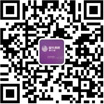定冠词the的用法
青岛新航道专注于青岛托福培训,设立专业托福培训班帮助考提高托福成绩,以下是青岛新航道托福培训为大家整理的定冠词the的用法,希望对大家有所帮助。
写作算是对语法要求比较高的项目了,如果在这个项目里稍微不注意,就会出现一些语法纰漏,所以就要求考生们对于一些语法细节悉心留意,比如定冠词the的用法。
关于定冠词the的用法:
1.表示特指的人或物
例:
The girl in red is his sister. 穿红色衣服的女孩是他妹妹。
2.表示双方都知道的或心中明白的人或物
例: Shut the door, please. 请关门。
3. 第二次提到
某人或某物次提到时用不定冠词,第二次提到时要用定冠词。
例:He saw a house in the distance. Jim's parents lived in the house. 他看见远处有一所房子,吉姆的父母就住在那所房子里。
There was once an old fisherman. The old fisherman had a cat. The cat was white. 从前有一个老渔夫。这个老渔夫有一只猫。这只猫是只白猫。
4. 用在世界上的名词前
这类词有:the sun太阳, the earth地球, the moon月亮,
the sky天空, the world 世界
例:The moon goes round the earth. 月亮绕着地球转。
There is not any cloud in the sky. 天空中没有一丝云彩。
It was a fine day in spring. The sun shone brightly. 这是一个晴朗的春日,阳光灿烂。
He is the richest man in the world. 他是世界上最富的人。
5. 用在表示方向、方位的名词前
这类词有:the east东方,the west西方,the south南方,
the north北方,the right右边,the left左边
例:The birds are flying to the north. 这些鸟向北方飞去。
The moon rises in the east and sets in the west. 月亮从东方升起,在西方落下。
The wind was blowing from the south. 风从南方吹来。
She lived to the west of the Summer Palace. 她住在颐和园的西边。
Walk along the road and take the first turning on the right. 沿着这条路往前走,在个路口往右拐。
He stood at the back of the door. 他站在门背后。
提示
方位词成对使用构成平行结构时,不用定冠词。
例:The river is two thousand kilometers long from west to east. 这条河自西向2000公里长。
They traveled through the country from south to north. 他们自南向北在这个国家旅行。
6. 用在形容词最前
例:Summer is the hottest season of the year. 夏天是一年中最炎热的季节。
7. 用在序数词等前
定冠词用在序数词前,也用在表示序列的next, last等前,还有在表示“同一”或“”等的词前。
例:The first man to land on the moon is an American. 个登上月球的人是美国人。
She was the fifth to climb to the top of the mountain. 她是第五个到达山顶的人。
This may be the last chance. 这可能是最后一次机会。
If I miss this train I'll catch the next one. 如果赶不上这趟火车,我就赶下一趟。
He is the only person who knows the secret. 他是一个知道这个秘密的人。
The two coats are of the same colour. 这两件外衣颜色相同。
This is the very book I want. 这正是我要的书。(用very表示强调)
提示
a 序数词表示“又一”时,前面用不定冠词a(an)
例:He bought a second pair of shoes. 他又买了一双鞋。
He asked a question, then a second, then a third…他问了一个问题,又问了第二个,第三个……
b 序数词用作状语或表语时,前面不加定冠词。
例:George arrived first. 乔治个到。
=George was the first person to arrive.
Jim and Jack are both second in the match. 汤姆和杰克在比赛中并列第二。
8. 用在单数名词前表示一类人或物,强调整个类别
例:The orange is a kind of fruit. 橘子是一种水果。
The horse is a useful animal. 马是一种有用的动物。
The computer is important to us. 电脑对我们来说是重要的。
提示
不定冠词+单数名词,不带冠词的复数名词也可表示一类人或物。
例:A car runs faster than a bus. 小汽车比公交车跑得快。
Cars run faster than buses.
A dog is a faithful animal. 狗是忠实的动物。
Dogs are faithful animals.
9.用在乐器名词前,表示演奏
例:She can play the piano. 她会弹钢琴。
He plays the violin very well. 他小提琴拉得很好。
He played the guitar for the children. 他给孩子们弹了吉他。
提示
但乐器名词表示具体的器物,或表示课程时,不加the.
例:He bought a piano last month. 他上个月买了一架钢琴。
She taught piano in the school. 她在学校里教钢琴。
10.用在江河、海洋、湖泊、群岛、山脉的名称前
例:
the Yangtze River 长江
the Red Sea 红海
the West Lake 西湖
the Pacific 太平洋the Himalayas 喜马拉雅山
the Nile 尼罗河
the Rocky Mountains 落基山脉
the South China Sea 南中国海
提示
例外的情况: Mount Tai 泰山China Daily 《中国日报
11.用在由普通名词和另外一些词构成的专有名词前
例:
the Great Wall 长城
the United Nations 联合国
the New York Times 《纽约时报》
the United States of America 美国
the Red Cross Hospital 红十字医院the Olympic Games 奥林匹克运动会
the Shanghai Railway Station 上海火车站
the People's Republic of China 中华人民共和国
the North Pole 北极
the People's Daily 《人民日报》
12. 用在某些形容词前,表示一类人或物或某种抽象概念
例: the old 老年人
the happy 幸福的人
the poor 穷人
the aged 老人
the sick 病人
the impossible 不可能的事the young 年轻人
the rich 富人
the blind 盲人
the wounded 伤员
the smooth 顺事
the beautiful 美,美的东西
The rich should help the poor. 富人应该帮助穷人。
The good is what people like. 人们总是喜欢美好的东西。
The wounded have been sent to the hospital. 伤员已经被送到医院去了。
13. 用在姓氏的复数形式前,表示全家人或这一姓的夫妇二人
例:The Greens will more to the country. 格林一家要搬到乡下去。
The Wangs came to see us yesterday. 王家一家人昨天来看我们。
The Browns are very friendly. 布朗夫妇都很友好。
14. 用在表示计算单位的名词前,含有“每,每一”的意思
例:Jim is paid by the hour. 吉姆的工资按小时付。
Eggs are sold by the kilogram. 鸡蛋按千克出售。
This cloth is sold by the yard. 这种布按码出售。
It sells at three dollars the pound. 它以每磅三美元出售。
They sell sugar by the pound. 他们按磅卖糖。
15. 用在前面已提到过的人的身体部位或衣着的名词前
这种用法是先把整个对象说出来,然后再说到那个对象的身体的局部或衣着。
结构:动词(hit, pull, pat, strike, catch, hold, take)
+sb. +介词(in, on, by, across)+身体部位或衣着
例:She touched him on the shoulder. 她碰了碰他的肩。
He took the girl by the hand. 他拉着小女孩的手。
比较:她拍了拍那男孩的头。
She patted the boy on his head. (误,本结构中身体部位或衣着前不用one's)
She patted the boy on the head. (正)
16 用在逢十的复数数词前,表示年代,也指人的大约岁数
例:The war broke out in the forties. 那场战争发生在40年代。
He went abroad in the 1980s. 他在20世纪80年代出国的。
17. 用在表示自然现象的名词前
这类名词有:the rain 雨,the wind风, the fog雾,the snow雪,
the air空气, the storm风暴,the snowstorm 暴风雪
例:Don't stand in the rain. 不要站在雨中。
The fog was so thick that we couldn't see the top of the hill. 雾很大,我们看不见山顶。
提示
a 这类名词前有形容词修饰时,可用不定冠词,表示“一场,一阵,一种”
例:A cold wind is blowing from the north. 冷风从北方吹来。
There was a heavy rain last night. 昨晚下了一场大雨。
A heavy snow is falling outside. 外面正下着大雪。
b 这类名词表示一般物质时,不用冠词。
例:Rain falls in summer; snow falls in winter. 夏天下雨,冬天下雪。
Man can't live without air. 没有空气人不能活。
18.用在某些习惯用语中
例:
in the daytime 白天
go to the concert 去听音乐会
at (/in) the beginning 开始
at the moment 当时,此刻
all the year round 一年到头
go to the cinema 去看电影
go to the theatre 去看戏
on the one hand, on the other hand 一方面,另一方面
提示
下面几个短语前不加定冠词:
例:at dawn 在黎明
at night 在晚上
at noon 在正午
at dusk 在黄昏
为了防止忘记,大家可以把以下顺口溜记起来,防止遗忘:
定冠词用法有规律,防止遗志很容易。
特指双方都熟悉, 上文已经被提及。
世上无二仅独一, 序数词和最。
山河海岛建筑物, 姓氏复数奏乐器。
少数形表人一类, 方位名词须牢记。
普构专有惯用词, 试用此诀有效率。
1。特指某人或某物。
如:The book on the desk is mine.
2。指双方都知道的人或事物。
如:Where are the new books,Jim?
3。指上文提到过的人或物。
There is an old woman standing there.
The old woman looked worried.
4.用在世上的事物名词前。
如:the sun, the sky, the earth, the world, etc.
5.用在序数词和形容词最前。
如:The third one is carrying the fewest of all.
6.用在山脉、江河、海洋、岛等名词前。
如:the Himalaya Mountains, the Yellow River, the Red Sea, the Taiwan Island, etc.
7。用在某些建筑物名词前。
如:the White House,
the Great Hall of the People
8。用在姓氏复数形式之前,
表示“某某一家”或“某某夫妇”
如:the Greens, the Blacks, etc.
作主语时,谓语用复数形式。
The Bakers are coming to see me yesterday.
9。用在乐器名词前。
如:play the piano,
play the violin, etc.
10。用在少数名词化的形容词前,
表示一类人或事物。
作主语时,谓语用复数形式.
如:the old, the poor, the blind, etc.
11.用在表示方向位置的名词前。
如:in the east, on the right, in the centre, etc.
12.用在由普通名词构成的专有名词前。
如:the People’s Republic of China, etc.
13.用在某些习惯用语中。
如:in the morning, by the way, look the same, etc.
以上就是给大家整理的定冠词the的用法,更多托福资讯欢迎访问青岛新航道托福频道。
写作算是对语法要求比较高的项目了,如果在这个项目里稍微不注意,就会出现一些语法纰漏,所以就要求考生们对于一些语法细节悉心留意,比如定冠词the的用法。
关于定冠词the的用法:
1.表示特指的人或物
例:
The girl in red is his sister. 穿红色衣服的女孩是他妹妹。
2.表示双方都知道的或心中明白的人或物
例: Shut the door, please. 请关门。
3. 第二次提到
某人或某物次提到时用不定冠词,第二次提到时要用定冠词。
例:He saw a house in the distance. Jim's parents lived in the house. 他看见远处有一所房子,吉姆的父母就住在那所房子里。
There was once an old fisherman. The old fisherman had a cat. The cat was white. 从前有一个老渔夫。这个老渔夫有一只猫。这只猫是只白猫。
4. 用在世界上的名词前
这类词有:the sun太阳, the earth地球, the moon月亮,
the sky天空, the world 世界
例:The moon goes round the earth. 月亮绕着地球转。
There is not any cloud in the sky. 天空中没有一丝云彩。
It was a fine day in spring. The sun shone brightly. 这是一个晴朗的春日,阳光灿烂。
He is the richest man in the world. 他是世界上最富的人。
5. 用在表示方向、方位的名词前
这类词有:the east东方,the west西方,the south南方,
the north北方,the right右边,the left左边
例:The birds are flying to the north. 这些鸟向北方飞去。
The moon rises in the east and sets in the west. 月亮从东方升起,在西方落下。
The wind was blowing from the south. 风从南方吹来。
She lived to the west of the Summer Palace. 她住在颐和园的西边。
Walk along the road and take the first turning on the right. 沿着这条路往前走,在个路口往右拐。
He stood at the back of the door. 他站在门背后。
提示
方位词成对使用构成平行结构时,不用定冠词。
例:The river is two thousand kilometers long from west to east. 这条河自西向2000公里长。
They traveled through the country from south to north. 他们自南向北在这个国家旅行。
6. 用在形容词最前
例:Summer is the hottest season of the year. 夏天是一年中最炎热的季节。
7. 用在序数词等前
定冠词用在序数词前,也用在表示序列的next, last等前,还有在表示“同一”或“”等的词前。
例:The first man to land on the moon is an American. 个登上月球的人是美国人。
She was the fifth to climb to the top of the mountain. 她是第五个到达山顶的人。
This may be the last chance. 这可能是最后一次机会。
If I miss this train I'll catch the next one. 如果赶不上这趟火车,我就赶下一趟。
He is the only person who knows the secret. 他是一个知道这个秘密的人。
The two coats are of the same colour. 这两件外衣颜色相同。
This is the very book I want. 这正是我要的书。(用very表示强调)
提示
a 序数词表示“又一”时,前面用不定冠词a(an)
例:He bought a second pair of shoes. 他又买了一双鞋。
He asked a question, then a second, then a third…他问了一个问题,又问了第二个,第三个……
b 序数词用作状语或表语时,前面不加定冠词。
例:George arrived first. 乔治个到。
=George was the first person to arrive.
Jim and Jack are both second in the match. 汤姆和杰克在比赛中并列第二。
8. 用在单数名词前表示一类人或物,强调整个类别
例:The orange is a kind of fruit. 橘子是一种水果。
The horse is a useful animal. 马是一种有用的动物。
The computer is important to us. 电脑对我们来说是重要的。
提示
不定冠词+单数名词,不带冠词的复数名词也可表示一类人或物。
例:A car runs faster than a bus. 小汽车比公交车跑得快。
Cars run faster than buses.
A dog is a faithful animal. 狗是忠实的动物。
Dogs are faithful animals.
9.用在乐器名词前,表示演奏
例:She can play the piano. 她会弹钢琴。
He plays the violin very well. 他小提琴拉得很好。
He played the guitar for the children. 他给孩子们弹了吉他。
提示
但乐器名词表示具体的器物,或表示课程时,不加the.
例:He bought a piano last month. 他上个月买了一架钢琴。
She taught piano in the school. 她在学校里教钢琴。
10.用在江河、海洋、湖泊、群岛、山脉的名称前
例:
the Yangtze River 长江
the Red Sea 红海
the West Lake 西湖
the Pacific 太平洋the Himalayas 喜马拉雅山
the Nile 尼罗河
the Rocky Mountains 落基山脉
the South China Sea 南中国海
提示
例外的情况: Mount Tai 泰山China Daily 《中国日报
11.用在由普通名词和另外一些词构成的专有名词前
例:
the Great Wall 长城
the United Nations 联合国
the New York Times 《纽约时报》
the United States of America 美国
the Red Cross Hospital 红十字医院the Olympic Games 奥林匹克运动会
the Shanghai Railway Station 上海火车站
the People's Republic of China 中华人民共和国
the North Pole 北极
the People's Daily 《人民日报》
12. 用在某些形容词前,表示一类人或物或某种抽象概念
例: the old 老年人
the happy 幸福的人
the poor 穷人
the aged 老人
the sick 病人
the impossible 不可能的事the young 年轻人
the rich 富人
the blind 盲人
the wounded 伤员
the smooth 顺事
the beautiful 美,美的东西
The rich should help the poor. 富人应该帮助穷人。
The good is what people like. 人们总是喜欢美好的东西。
The wounded have been sent to the hospital. 伤员已经被送到医院去了。
13. 用在姓氏的复数形式前,表示全家人或这一姓的夫妇二人
例:The Greens will more to the country. 格林一家要搬到乡下去。
The Wangs came to see us yesterday. 王家一家人昨天来看我们。
The Browns are very friendly. 布朗夫妇都很友好。
14. 用在表示计算单位的名词前,含有“每,每一”的意思
例:Jim is paid by the hour. 吉姆的工资按小时付。
Eggs are sold by the kilogram. 鸡蛋按千克出售。
This cloth is sold by the yard. 这种布按码出售。
It sells at three dollars the pound. 它以每磅三美元出售。
They sell sugar by the pound. 他们按磅卖糖。
15. 用在前面已提到过的人的身体部位或衣着的名词前
这种用法是先把整个对象说出来,然后再说到那个对象的身体的局部或衣着。
结构:动词(hit, pull, pat, strike, catch, hold, take)
+sb. +介词(in, on, by, across)+身体部位或衣着
例:She touched him on the shoulder. 她碰了碰他的肩。
He took the girl by the hand. 他拉着小女孩的手。
比较:她拍了拍那男孩的头。
She patted the boy on his head. (误,本结构中身体部位或衣着前不用one's)
She patted the boy on the head. (正)
16 用在逢十的复数数词前,表示年代,也指人的大约岁数
例:The war broke out in the forties. 那场战争发生在40年代。
He went abroad in the 1980s. 他在20世纪80年代出国的。
17. 用在表示自然现象的名词前
这类名词有:the rain 雨,the wind风, the fog雾,the snow雪,
the air空气, the storm风暴,the snowstorm 暴风雪
例:Don't stand in the rain. 不要站在雨中。
The fog was so thick that we couldn't see the top of the hill. 雾很大,我们看不见山顶。
提示
a 这类名词前有形容词修饰时,可用不定冠词,表示“一场,一阵,一种”
例:A cold wind is blowing from the north. 冷风从北方吹来。
There was a heavy rain last night. 昨晚下了一场大雨。
A heavy snow is falling outside. 外面正下着大雪。
b 这类名词表示一般物质时,不用冠词。
例:Rain falls in summer; snow falls in winter. 夏天下雨,冬天下雪。
Man can't live without air. 没有空气人不能活。
18.用在某些习惯用语中
例:
in the daytime 白天
go to the concert 去听音乐会
at (/in) the beginning 开始
at the moment 当时,此刻
all the year round 一年到头
go to the cinema 去看电影
go to the theatre 去看戏
on the one hand, on the other hand 一方面,另一方面
提示
下面几个短语前不加定冠词:
例:at dawn 在黎明
at night 在晚上
at noon 在正午
at dusk 在黄昏
为了防止忘记,大家可以把以下顺口溜记起来,防止遗忘:
定冠词用法有规律,防止遗志很容易。
特指双方都熟悉, 上文已经被提及。
世上无二仅独一, 序数词和最。
山河海岛建筑物, 姓氏复数奏乐器。
少数形表人一类, 方位名词须牢记。
普构专有惯用词, 试用此诀有效率。
1。特指某人或某物。
如:The book on the desk is mine.
2。指双方都知道的人或事物。
如:Where are the new books,Jim?
3。指上文提到过的人或物。
There is an old woman standing there.
The old woman looked worried.
4.用在世上的事物名词前。
如:the sun, the sky, the earth, the world, etc.
5.用在序数词和形容词最前。
如:The third one is carrying the fewest of all.
6.用在山脉、江河、海洋、岛等名词前。
如:the Himalaya Mountains, the Yellow River, the Red Sea, the Taiwan Island, etc.
7。用在某些建筑物名词前。
如:the White House,
the Great Hall of the People
8。用在姓氏复数形式之前,
表示“某某一家”或“某某夫妇”
如:the Greens, the Blacks, etc.
作主语时,谓语用复数形式。
The Bakers are coming to see me yesterday.
9。用在乐器名词前。
如:play the piano,
play the violin, etc.
10。用在少数名词化的形容词前,
表示一类人或事物。
作主语时,谓语用复数形式.
如:the old, the poor, the blind, etc.
11.用在表示方向位置的名词前。
如:in the east, on the right, in the centre, etc.
12.用在由普通名词构成的专有名词前。
如:the People’s Republic of China, etc.
13.用在某些习惯用语中。
如:in the morning, by the way, look the same, etc.
以上就是给大家整理的定冠词the的用法,更多托福资讯欢迎访问青岛新航道托福频道。
相关阅读:
托福写作课程中心
查看更多 >托福快讯
- 2018托福考试时间表已公布... 2018-33-04
- 2015年的托福考试快要结束... 2015-06-10
- 2019-52-07
- 不管你是不是英语专业的,... 2016-07-22
- 啃单词、练听力、梦里都在... 2016-41-03



